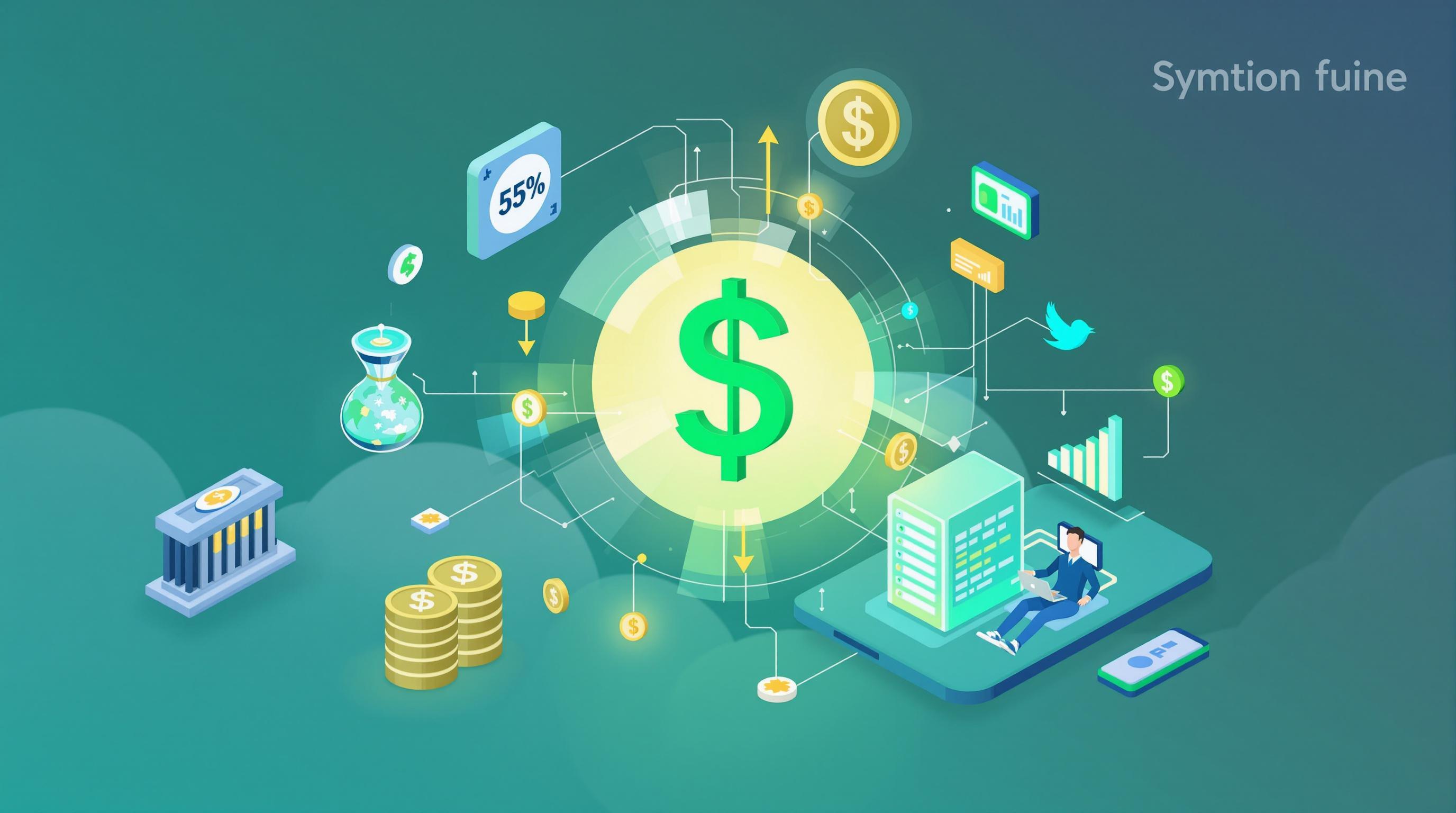Featured Articles
- 5 Emerging Technologies Revolutionizing Personal Finance Management in 2024
- 7 Best Robo-Advisors Released Since 2019 Revolutionizing Personalized Investment Strategies
- "Crypto Cats: How Feline Influencers Are Shaping the Future of Crypto Investments"
- Cryptocurrency and Climate Change: Can Digital Currencies Help Save the Planet?
- Cryptocurrency as Art: Exploring the Financial Value of Digital Creations in the NFT Market
5 Emerging Technologies Revolutionizing Personal Finance Management in 2024
5 Emerging Technologies Revolutionizing Personal Finance Management in 2024
5 Emerging Technologies Revolutionizing Personal Finance Management in 2024
1. Artificial Intelligence and Machine Learning
Artificial Intelligence (AI) and Machine Learning (ML) have become integral to personal finance management in 2024. These technologies analyze vast amounts of financial data to provide personalized budgeting tips and investment advice. By recognizing patterns in spending and income, AI-powered apps can predict future expenses and suggest ways to save more effectively.
The use of AI chatbots in customer service has also improved financial literacy and accessibility. Users receive instant responses to complex questions about loans, credit scores, and investment options, enabling better decision-making.
Recent studies show that AI-enabled financial tools can increase saving rates by up to 30% by offering customized insights. As these technologies continue to evolve, their role in empowering individuals to achieve financial goals is expected to grow. (Source: Forbes, 2024)
2. Blockchain and Decentralized Finance
Blockchain technology is transforming personal finance through decentralized finance (DeFi) platforms. These platforms allow users to access banking services like lending, borrowing, and trading without intermediaries. As a result, transaction fees are reduced, and financial services are more accessible globally.
In 2024, blockchain-based wallets offer enhanced security features such as multi-signature authentication and immutable transaction records. These tools help users maintain control over their assets while providing transparency and reducing fraud risks.
Additionally, tokenization of assets enables fractional ownership, allowing individuals to diversify investments with smaller amounts of money. This democratization of investment opportunities is reshaping how people manage and grow their wealth. (Source: Harvard Business Review, 2024)
3. Biometric Security Technologies
Biometric security has advanced significantly in personal finance applications this year. Financial institutions and apps now employ fingerprint, facial recognition, and voice authentication to protect user data and prevent unauthorized access.
Unlike traditional passwords or PINs, biometrics offer higher security as they are unique to each individual; this reduces the risk of fraud and identity theft. Users can authenticate transactions quickly and effortlessly, improving the overall user experience.
Biometric data is increasingly encrypted and stored locally on devices to ensure privacy compliance with global regulations. As privacy concerns rise, this approach balances security and user confidentiality effectively. (Source: TechCrunch, 2024)
4. Voice-Activated Financial Management
Voice-activated technology is expanding its footprint in personal finance management. Virtual assistants like Siri, Alexa, and Google Assistant can now interact with financial apps to check balances, schedule payments, and offer tailored financial advice.
These voice interfaces make managing finances more accessible for people with disabilities or those who prefer hands-free interactions. They also enable quick updates on spending and budget summaries without needing to navigate complex apps.
Continuous improvements in natural language processing allow these assistants to understand nuanced commands and provide more personalized recommendations, enhancing user engagement and satisfaction. (Source: Wired, 2024)
5. Augmented Reality (AR) for Financial Visualization
Augmented Reality is beginning to offer novel ways to visualize personal finances. By using AR glasses or smartphone cameras, users can see graphical representations of budgets, investment growth, and spending trends superimposed in their environment.
This immersive experience helps individuals grasp complex financial data more intuitively, making it easier to plan and adjust financial goals. AR can also simulate potential investment scenarios in a tangible way, improving risk assessment and decision confidence.
Financial institutions are piloting AR tools to engage younger audiences and foster financial literacy, combining education with cutting-edge technology effectively. (Source: MIT Technology Review, 2024)
6. Robotic Process Automation (RPA) in Financial Tracking
Robotic Process Automation is streamlining routine personal finance tasks such as expense categorization and bill payments. In 2024, many finance management tools use RPA to automate these processes, reducing human error and saving time.
By integrating with bank APIs, RPA bots fetch real-time transaction data and organize it systematically. Users receive detailed reports without manual input, allowing them to focus on strategic financial decisions instead of tedious record keeping.
The scalability and efficiency of RPA make it a valuable asset for both individuals and small businesses, improving accuracy and reliability in personal finance management. (Source: Gartner, 2024)
7. Personalized Financial Wellness Platforms
Personalized financial wellness platforms harness data analytics and behavioral science to offer custom financial plans. These platforms track users’ goals, spending habits, and risk tolerance, providing actionable pathways to improve financial health.
In 2024, such platforms often integrate with wearable devices, enabling real-time feedback based on lifestyle choices like travel or dining out. This holistic approach aligns financial goals with daily behavior for better results.
Employers are increasingly adopting these tools to support employee financial well-being, demonstrating broader acceptance of personalized financial health as a critical component of overall wellness. (Source: PwC, 2024)
8. Open Banking and API Ecosystems
Open Banking initiatives facilitated by APIs provide users with unprecedented control over their financial data. In 2024, more banks and fintech companies are cooperating to offer integrated services that combine data from multiple financial accounts.
This connectivity allows for comprehensive financial overviews and cross-platform management. Users can switch providers or add new services without losing data continuity, fostering competition and innovation.
Regulatory frameworks supporting open banking emphasize secure data sharing and consumer consent, ensuring transparency and protection in these expanding ecosystems. (Source: European Banking Authority, 2024)
9. Cryptocurrency Payment Integration
Cryptocurrency adoption in everyday payments is gaining momentum with new integration options in personal finance apps. In 2024, users can seamlessly convert and spend crypto assets alongside traditional currencies.
This integration supports budgeting and expense tracking in mixed currency formats while offering access to new investment opportunities through digital assets. Users benefit from faster settlements and lower transaction costs.
While volatility remains a concern, improved wallet security and regulatory clarity have increased user confidence, making crypto a viable part of diversified personal finance strategies. (Source: CoinDesk, 2024)
10. Smart Contracts for Automated Savings and Investments
Smart contracts use blockchain technology to automate savings plans and investment transactions based on predefined rules. In 2024, these self-executing contracts reduce the need for intermediaries and enhance trust through transparency.
Users can program their finances to allocate funds automatically to emergency savings or retirement accounts when certain income thresholds are met. This automation encourages discipline and consistent financial growth without manual intervention.
The rise of smart contract platforms is enabling tailored financial strategies that adjust dynamically to market conditions and personal circumstances, redefining active personal finance management. (Source: Deloitte Insights, 2024)




